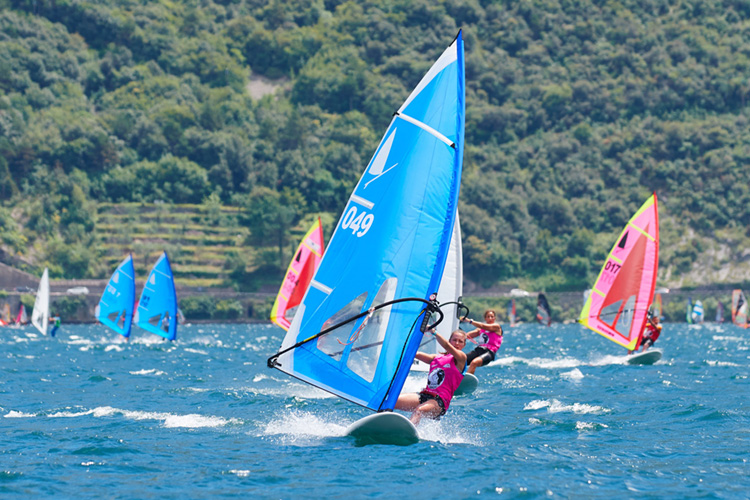Windsurfing was born in 1964 and became an officially recognized sailing sport in 1973. But the water sport's history is indissociable from the Windsurfer.
The International Windsurfer Class Association (IWCA) started its activities in the early 1970s. The class created by Hoyle and Diane Schweitzer was introduced in the USA and Europe in 1973 and to Australia in 1976.
The first international windsurfing events were run with the Windsurfer, a one-design class that showcased one single board and the same sail for all competitors.
The first world championship was held in San Diego, California, in 1973. Windsurfers also raced their first international regatta in France in 1974.
Competitors were assigned to different divisions according to their weight and gender, making the fleet sizes more manageable and keeping the competition fair for heavier sailors.
The sport of sailboarding was accepted as an Olympic yachting class in the early 1980s.
The 1984 Olympics included the Windglider sailboard division as well as demonstration events on Windsurfer One designs.
At the end of the same year, the Windsurfer One Design World Championships were held in Perth, Western Australia, with over 450 entrants.
Even if the evolution of windsurfing took different ways in the late 1980s, 1990s, and 2000s, the Windsurfer class went on racing in the traditional way.
In the 2010s, it remained one of the most popular classes in Italy and Australia. In 2017, Barcelona held the Eurocup with the participation of 80 athletes coming from seven European nations.
But 2018 was the year of the definitive relaunch of the Windsurfer class.
In March, the new Windsurfer LT was adopted and, in July, the World Cup on Lake Garda had 103 athletes from 12 nations. In November, World Sailing recognized the Windsurfer as an official windsurfing class.
Today, the "Windsurfer Spirit" can be defined as 50 percent fair competition and 50 percent social time.
The Equipment
The board has 227 liters in volume. It is 366 centimeters long and 74 centimeters wide. It weighs 15 kilograms.
The sail has 5.7 square meters, the mast is 460 centimeters and 40 percent carbon SDM, and the boom is 180-240 aluminum.
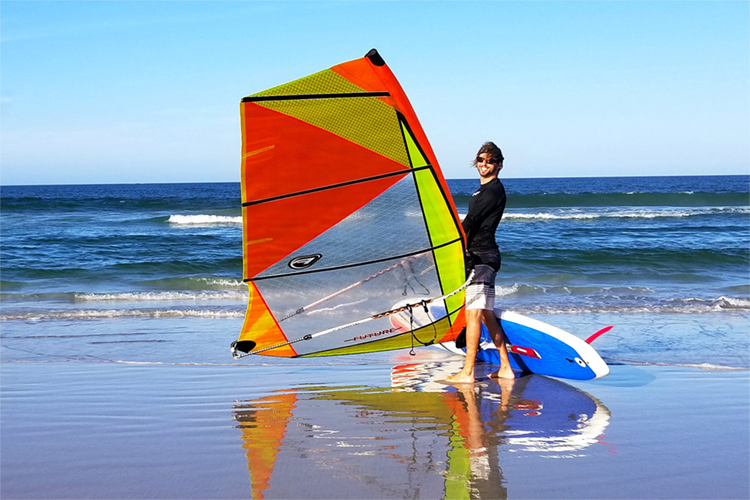
The Market
To stimulate the widest possible distribution and create a competitive market environment, Windsurfer equipment is both manufactured and distributed innovatively.
The distribution model is open to any interested party, both with or without an agreement with IWCA.
Approved equipment can be marketed under three possible models:
- The Windsurfer branded equipment: equipment only features the Windsurfer brand;
- The co-branded equipment: the equipment is co-branded by an approved distributor and carries both the Windsurfer logo and the distributor logo;
- The "white board” model: an independent brand markets the one-design board (excluding the rig);
The manufacturing model respects a tight regulation of the one-design specifications and is potentially open to suppliers that can demonstrate to be compliant with class specifications and quality levels.
The currently approved suppliers are Cobra international (hull, daggerboard, and fin), Weihai Julia Sport Product Co (mast), Technic Devotion Corp (boom, mast base, and joint), and Sails East (sail).
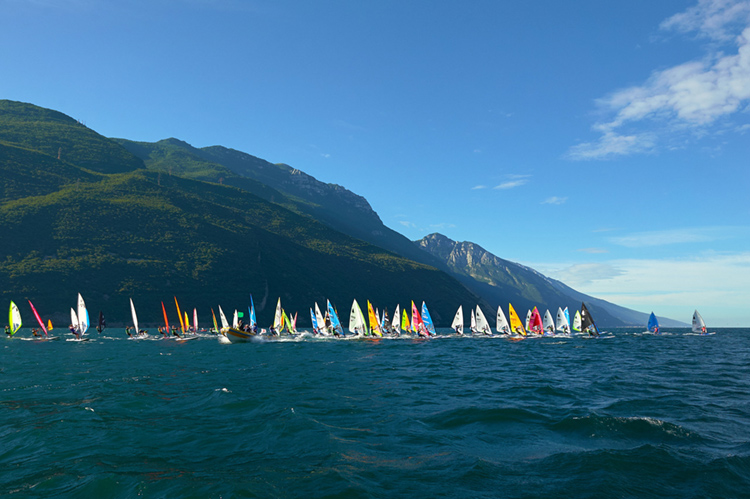
The Performance
The Windsurfer LT performs very well in a wide variety of wind and sea conditions.
Upwind performance is much better than in other windsurfing classes, thanks to the significant upwind angles that are granted by the board shape and racing daggerboard.
This is always true from minimal wind to 30+ knots.
This versatility plays a key role in a possible Olympic race schedule, having a very high percentage of predictable starts at precise timing.
Upwind performances and easiness of tacking are also ensuring the possibility of seeing a lot of strategic actions on the water.
Downwind performances are enabled by the fully retractable daggerboard. This allows racers to reach considerable speeds in planing conditions, with full planing gybes.
With light wind conditions, downwind legs become more tactical as sailors have to find the perfect trade-off between narrower angles and higher speed vs. wider angles but slower speed.
The sheer versatility of board and rig is a key enabler to offering an unprecedented range of competition formats, such as course racing, slalom, long distance, freestyle, and of course, team sailing.
It is important to remark that the board has a width and stability that makes it perfect also for school or SUP usage. This is considered crucial for a worldwide relaunch of the entire windsurfing sport.
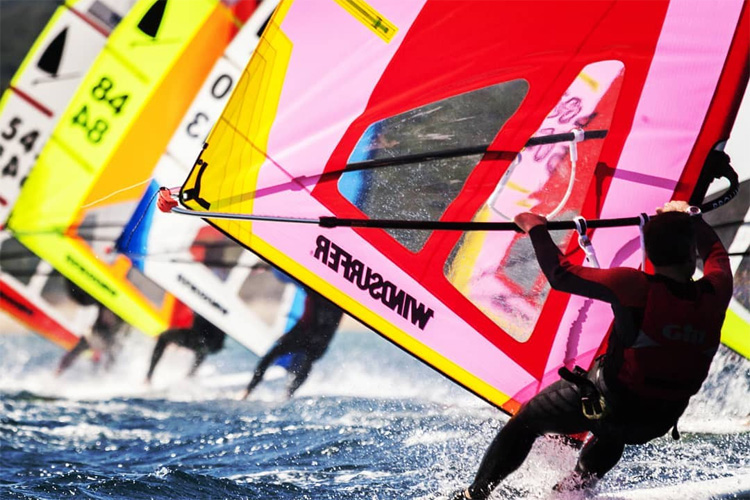
The Media Appeal
The bright multicolored sails and tactical races guarantee an excellent return through media channels.
The ability to compete in any wind and sea conditions is the best guarantee to respect the television slots.
The use of flag sails, customized for each country, guarantees recognition in every media.
The team sailing formula with top drone shooting on a small racecourse ensures great comprehensibility, even for non-expert viewers.
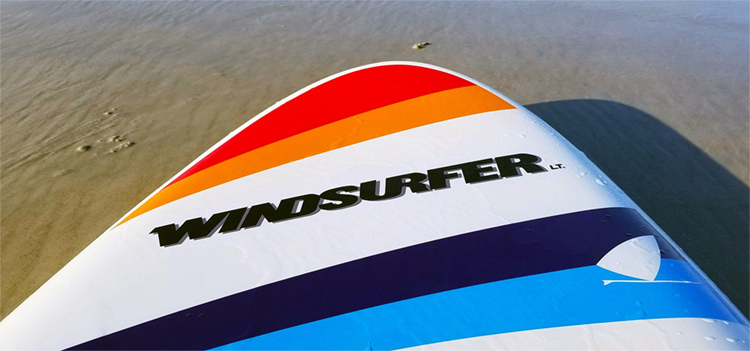
The Physique of a Windsurfer Class Sailor
Hull volume of 220 liters allows a competitive and comparable use of Windsurfer equipment to athletes (women and men) whose weight ranges from 45 kilograms to 95+ kilograms sailors.
A single sail size (5.7 square meters) is adopted for males and women, for all different sailors' weights, and in every wind condition.
The level of athleticism required is not excessive for local or regional level regattas; obviously, it is higher when it goes internationally.
It is important to underline that in course racing, pumping is not allowed on upwind legs - excluding 30 seconds after the start - and is unlimited on downwind legs.
This ensures that the tactical and technical aspects of sailing are as important as the physical aspects.
The tactical setting during regatta is important in both light and strong wind conditions.
In fact, the Windsurfer LT is a very maneuverable board and allows you to take advantage of every wind shift. Tacking is fast and not so disadvantageous as in other windsurf classes.
Fleet Size and Locations
During the 1980s and 1990s, the Windsurfer class grew massively, with over 350,000 one-design boards sold globally. It was the biggest sailing class ever.
With the relaunch of the class based on the introduction of the Windsurfer LT in 2018, already over 800 boards have been sold around the world, especially in Europe, Asia, Australia, and the United States.
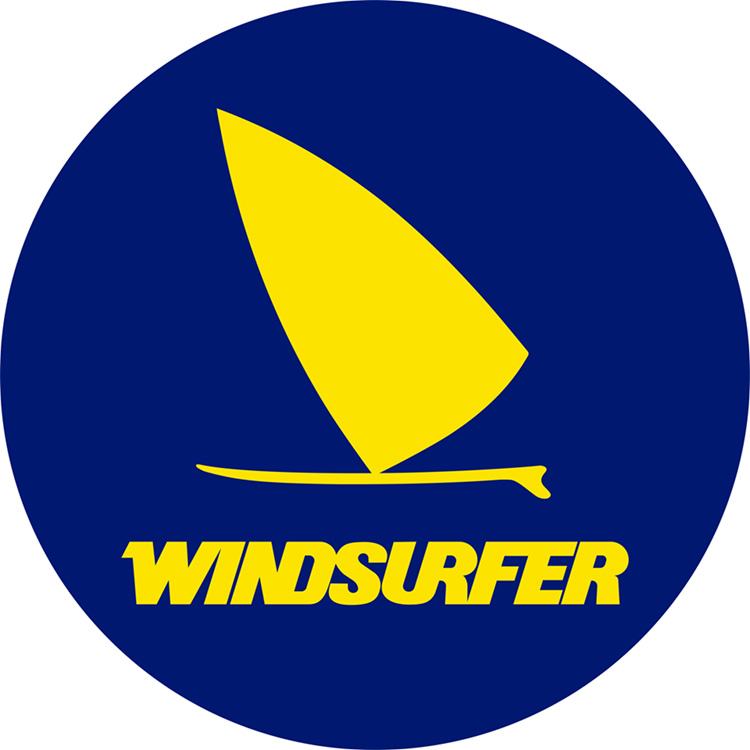
Cost and Transportation
The cost of a Windsurfer LT ready to sail is only €1,990, much less when compared to other Olympic boats.
Due to its relatively light weight and single rig, the cost of traveling with Windsurfer equipment is significantly lower than other windsurfing boards and other Olympic class equipment.
Windsurfer boards and rigs can be easily transported on standard car roof racks.
For long-distance travel, Windsurfer equipment can be checked-in at airports, and most airlines accept the equipment as excess baggage.
Anyway, being widely distributed worldwide, thanks to its innovative distribution model, in every major event (World Championships, Continental Championships, International Races), the local distributors can guarantee the availability of charter boards with an affordable charter fee (equal or lower than €200 per event).
For competitions in locations where local distributors are not present, the class, with the support of distributors, can arrange bulk transportation of equipment to be chartered.
Competition Formats
The Windsurfer class has used various regatta formats since the 1970s: course race, slalom, marathon, team racing, and freestyle.
The simplicity of the hull and rig guarantees the versatility of competition formats. There are several options:
- Course racing courses: two marks, two marks with a gate, and three marks;
- Slalom courses: six-buoy course ( one vs. one, direct elimination), four-buoy course (heats with multiple boats);
- Team racing: based on course racing courses or four-buoy slalom course;
- Marathon: long distance race with courses varying according to locations;
- Freestyle: three-minute skill exhibition with competitors judged based on the degree of difficulty of the individual trick, control of the rig or board, and overall impression (fluidity, style, and artistic impression);
